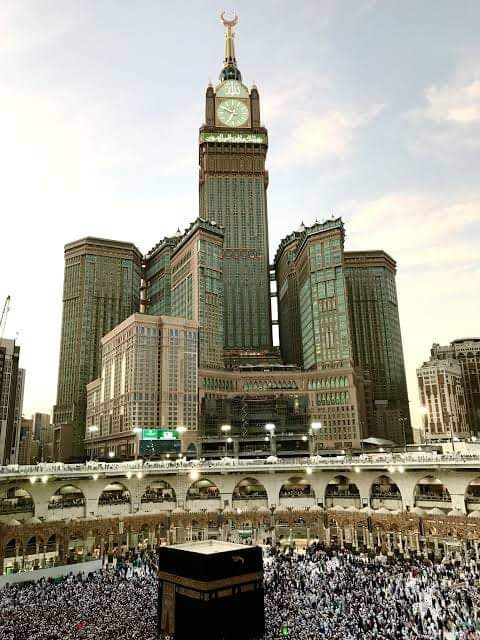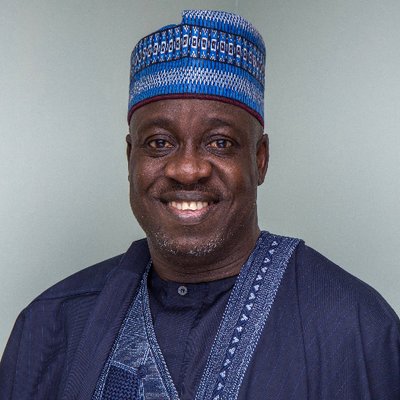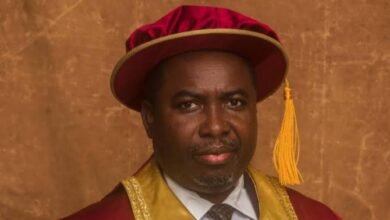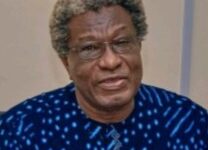TERRORISM: The madrasah connection

By FEMI ABBAS
“The issues bringing the East and the West together are more mutually suspicious than friendly. And no amount of pretext can erase this fact. The lopsidedness in that relationship however is the main cause of the current global turmoil. There are much more fundamental causes of wonton destruction of lives and property than the principal actors therein are presenting to the world.”
Monologue
The ongoing raging calamities in form of terrorism, banditry, armed robbery and serial rape in Nigeria, today, are cultivating a variety of focuses, ironically, from the agents of the Lucifer, who are clandestinely engineering them. The calamities are virtually turning those agents into thirsty entities searching for water in a chronic desert where no oases are available. The world is passing through a trying period which needs to be studied with caution and candour. And, those who will sincerely be involved in such a study must thread softly. The continuity of human existence is dependent, not on selfish destruction of the lives of others but on ventilating the atmosphere for all and sundry through universal peace. It is rather a deceptive bid for certain people in a part of the world to engage, surreptitiously, in the annihilation of another part of the world on a satanic assumption that the survival of the their own part. In their search for the root cause of terrorism around the world, some Western countries began, some years ago, to beam their searchlights on madrasah (ie Arabic/Qur’anic school) in the entire world in an erroneous belief that only such school could serve as as the main bastion of extremism and breed terrorists in various societies. While this satanic remains un-established, the occurrences which led to its germination are far from making it a justifiable cause of such an allegation.
Preamble
Whereas madrasah has been in existence in Nigeria since the 9th century CE, terrorism in this country is a recent phenomenon engendered by certain imported circumstances clandestinely imposed mostly on third world countries. To genuinely identify the causes of terrorism, a thorough and unbiased study of the circumstances that warrant it should be a sine qua non.
Since 2009 when Muhammad Yusuf, the founder of a religious group that came to be called ‘Boko Haram’ was killed in cold blood by Nigerian Police, no single case of terrorism has been linked directly to any madrasah either in the Middle East or in Asia or in Europe or in America or even in Africa. Most of the persons who were arrested and judicially tried for terrorism in Nigeria, in the past one decade or thereabout, attended formal, conventional schools and not madrasah. In fact, most of those criminals have been found to be professionals in various fields of human endeavour.
It is thus, clear, in reason and logic, that anybody who would handle such sophisticated weapons of mass destruction must be reasonably educated in sciences and technology. And, the secrecy of training such criminals, as well as the intellectual and material resources required for their training, are far beyond the level of any local madrasah boys and girls.
Madrasah (the plural of which is madaris), is a school where Qur’an and Sunnah are taught and learned in Arabic language. And, the purpose of learning in those schools is to thoroughly comprehend Islamic law and jurisprudence for acquiring deep Islamic knowledge and for worshipping Allah, based on such knowledge.
Locations of Madaris
Wherever Muslims are found, madaris must be found. Madrasah is the primary source of acquiring Islamic education. All other serious religions also have similar schools for similar purposes and they are not subjected to any persecuting harassment through the media. For instance, there was nothing like Boko Haram in any part of Africa, in 1988, when a group named ‘The Lords Resistance Movement’ (LRM), was established in Uganda. That Movement of an heterodox Christian group, which was destructively operating in Northern Uganda, was led by one Joseph Kony. Its objective was to overthrow the government of Uganda and establish a Christian government in that country as a model in Africa. For 24 years, from 1988 when that terrorist movement was established to 2014, when its leader, Joseph Kony, went into hiding, LRM remained a painful whitlow on the thump of Uganda. Yet no Muslim media linked it to any Christian cathichism.
Reminiscence
For the information of tose who are venomously labelling madrasah as a breeder of terrorists, it is on record that the very first University in the world (the University of Cordoba, established by the Muslims in Spain, in the 9th century, sprang from madrasah. And the three oldest Universities in the world today, (Al-Azhar University in Cairo, Egypt;
Qarawiyyin University in Fez, Morocco and
Zaytuniyyah University in Tunis, Tunisia; all of which were established in the 10th century, emerged from madrasah. It was from those Universities that the West first came in contact with the idea of tertiary education.
Attestation
Attesting to the above fact in a lecture he delivered at Oxford University in 1993, Prince Charles of England said as follows:
“If there is much misunderstanding in the West about the nature of Islam, there is also much ignorance about the debt which our own culture and civilisation owe to the Islamic world. It is a failure which stems, I think, from the straight jacket of history which we have inherited. The mediaeval Islamic world, from Central Asia to the shores of the Atlantic, was a world where scholars and men of learning flourished”.
“But because we have tended to see Islam as the enemy of the West, as an alien culture, society and system of belief, we have tended to ignore it or erase its great relevance to our history. For example, we have underestimated the importance of 700 years of Islamic society and culture in Spain between the 8th and 15th centuries. The contribution of Muslim Spain to the preservation of classical learning during the Dark Ages, and the first flowering of the Renaissance, has long been recognised”.
Traits of Civilization
In his 1993 educative lecture at Oxford University, which drew applause from renowned intellectuals, Prince Charles continued as follows:
“Many of the traits on which modern Europe prides itself came to it from Muslim Spain. Diplomacy, free trade, open borders, the techniques of academic research, of anthropology, etiquette, fashion, alternative medicine, hospitals, all came from this great city of cities”. “Medieval Islam was a religion of remarkable tolerance for its time allowing Jews and Christians the right to practise their beliefs, and setting an example which was not, unfortunately, copied for many centuries in the West….”
Comment
If this was the Muslim situation in medieval Europe and it all came through the madrasah, why should the same madrasah become a hunted institution in the 21st century?
A Professorial Analysis
It was for the purpose of answering the above question succinctly that the role of ‘madaris’ in the modern world caught the attention of LAI OLURODE, a renowned Professor of Sociology at the University of Lagos, who wrote a well researched book on that subject, which was publicly presented on Wednesday, January 13, 2009 at Airport Hotel, Ikeja, Lagos.
Comparative Analysis
In the book entitled ‘Glimses of Madrasah in Africa’, Professor Olurode did a comparative analysis on the function of madrasah in Nigeria and Kenya pointing out the similarities and dissimilarities in the methodology of teaching Arabic language/Islamic religion in both countries as well as the impact of those madaris on the peoples of both countries.
Professor Olurode, a onetime Dean of the Faculty of Arts in the University of Lagos and now the Chairman of the that University’s Muslim Community, also looked into the structure of ‘madrasah’ system of learning in the two mentioned countries of study with regards to ownership, student enrolment, gender and age distribution, curriculum, location and environment of madrasah. He did not stop there as he went further to examine teachers’ qualifications and remunerations as well as funding and parents’ expectations from those schools.
Strength and Weaknesses of Madaris
Using Iwo (in Osun State) and Ilorin (in Kwara State), two Yoruba speaking cities in the Southwest and Middle Belt of Nigeria and two coastal towns of Mombasa and Lamu in Kenya, as study cases, Professor Olurode went into thorough analysis of strength and weaknesses of madaris pointing out what ought to be done in those institutions as against what was on ground at the time he presented his book.
In that book, he also looked at the phenomenon of madrasah in the medieval time as well as the contemporary time, vis a vis the conventional modern day schools and, he traced the connection of madrasah to the current global geo-politics.
Excerpt
Below is an excerpt from what he said in the book:
“The American war against the Soviets in Afghanistan could not have recorded much success without the collaboration of Muslim coalition forces that were determined to oust the pro-Russian regime in Afghanistan. The US conveniently courted the friendship of those Muslims and their organisations that were willing to fight against the Soviet Union in Afghanistan so as to roll back the evil of communism.
“The research findings of M. Mamdani (in his book published in New York in 2004: Good Muslim, Bad Muslim: ‘The Cold War and the Roots of Terror’) suggested a strong possibility of a CIA connection in the recruitment network that prosecuted the war in Afghanistan. There were also traces of religious and charitable organisations involvement in the recruitment drive and on an international scale too. Mamdani went further by insisting that: The Tablighi Jamat was neither set up nor functioned as a terrorist organisation. This main stream religious group was, however, among those used by the CIA as a conduit in its recruitment.
“In the United States too, the CIA took cover behind legitimate charitable and religious Muslim organisations…one instance will suffice to highlight this development thus:
“According to Cooley, the Al-kifah Afghan refugees center on Atlantic Avenue in Brooklyn, New York, was turned into a key center for “recruiting and fund raising for the Afghan jihad” and came to be called “Al-Jihad center by those who worked there. (See pages 13-15 of Mamdani’s book).
Also, after touching deeply on such areas about madrasah like: Centrality of Early Child Education to Poverty Reduction; Connecting Madrasah to Public Education and Empowerment; Advocacy and Public Support for Madrasah; Penetrating the Worldview of Madrasah Pupils and Teachers as well as Cultural Heuristic and Moral Considerations, Professor Olurode concluded as follows: “The theory which drives this analysis, as outlined before, was that which subscribes to the centrality of culture in development. On several occasions, when culture has been ignored, development action, even where it manifests, is patently unsustainable. In a world that is characterized by turbulence, social prejudice and stereotype, violence, restlessness, profound uncertainties and insecurity, the madrasah system as a cultural heritage of the Islamic world has endured”. “This, it has done because it provides a shield from the perceived global siege on Islam and its practitioners”.
“Muslims are generally of the view that Islam and Muslims are under siege and there exists a conspiratorial theory against Islam by the West and their allies. But the survival of Islam and the Muslims in the context of globalization is not without noticeable changes on its fringes. The retention of the core features of madrasah in the Islamic societies under study underlines the importance and the wisdom in working through this heritage, rather than by-passing it in the efforts to open up Muslims to effective participation in modern education. The typical madrasah should therefore be courted….”.
When Professor Olurode’s social theory of madrasah and his recommended conclusion are juxtaposed with the thinking in the West, there is tendency that keen observers will settle for Rudyard Kipling’s couplet in which he concluded that “West is West and East is East; never will the twain meet”.
The issues bringing the East and the West together are more mutually suspicious than friendly. And no amount of pretext can erase this fact. The lopsidedness in that relationship however is the main cause of the current global turmoil. There are much more fundamental causes of wonton destruction of lives and property than the principal actors therein are presenting to the world.
Conclusion
Now, there seems to be much more trouble ahead than currently being witnessed. America is engaging many countries including Nigeria, Kenya, Somalia, Libya, Iraq, Iran, Syria, Yemen, Pakistan, Afghanistan and Saudi Arabia in a counter-terrorism war. And she wants to win on all fronts. The Iraqis and the Afghans are calling on the US to withdraw her forces from their land. Yemen and Pakistan are grudging over America’s usurpation of their security managements. Saudi Arabia and Syria are not pleased with the master’s role which America is playing in the Middle East. Iran and Lebanon are almost in readiness for war with the US. Nigeria and Kenya are watching very carefully, the step being taken by the US in blacklisting them over isolated cases of attempted or suspected terrorism link.
This is the same situation that paved way for the doom of Germany in the World War II when Adolf Hitler lost to arrogance of power rather than inferiority of arsenal. In a situation where the United States in collaboration with her Western allies is pulling dozens of countries into a war arena whither the world in the 21st century?
*First published Friday December 25, 2020 as regular in The Nation.









